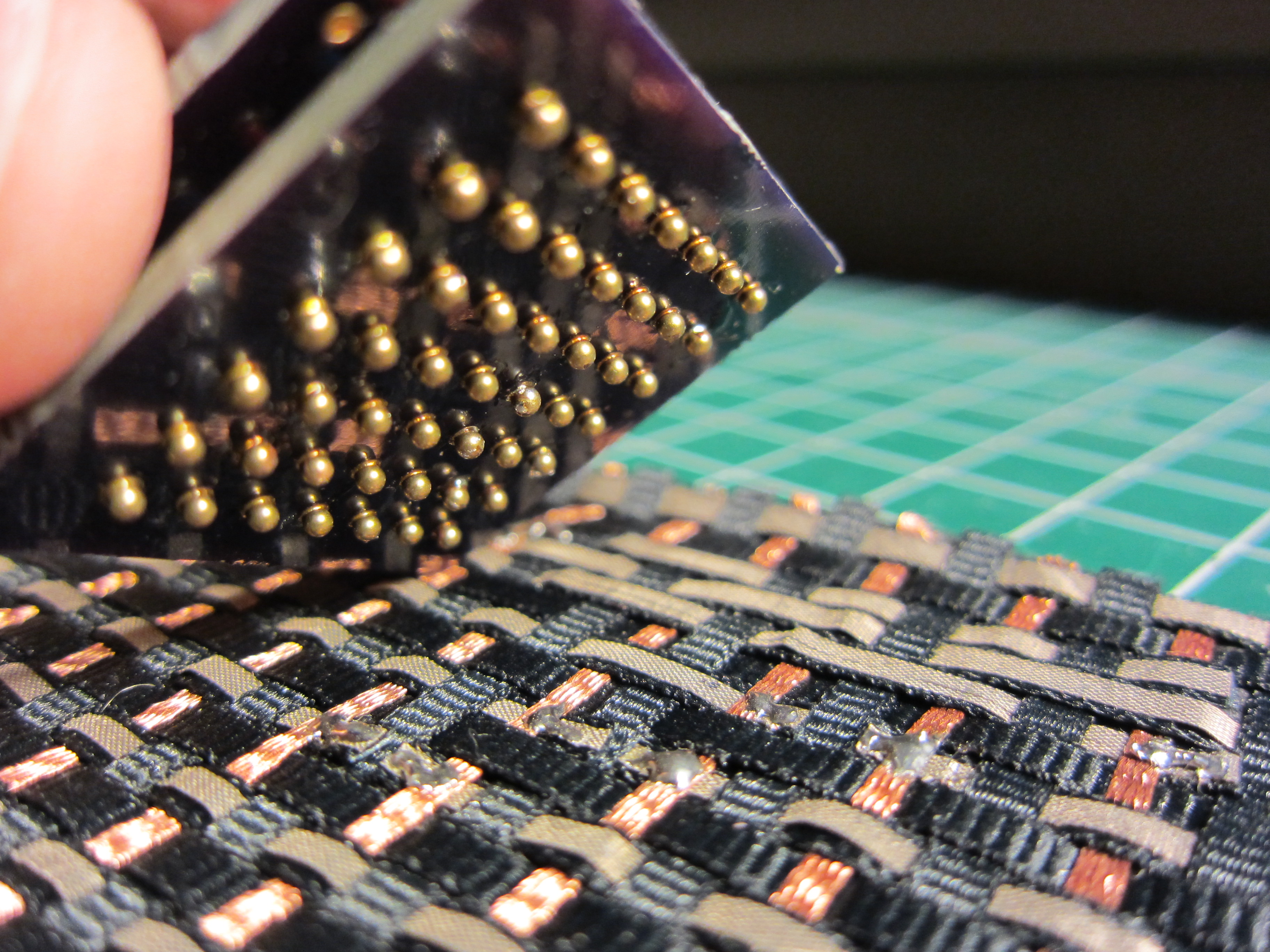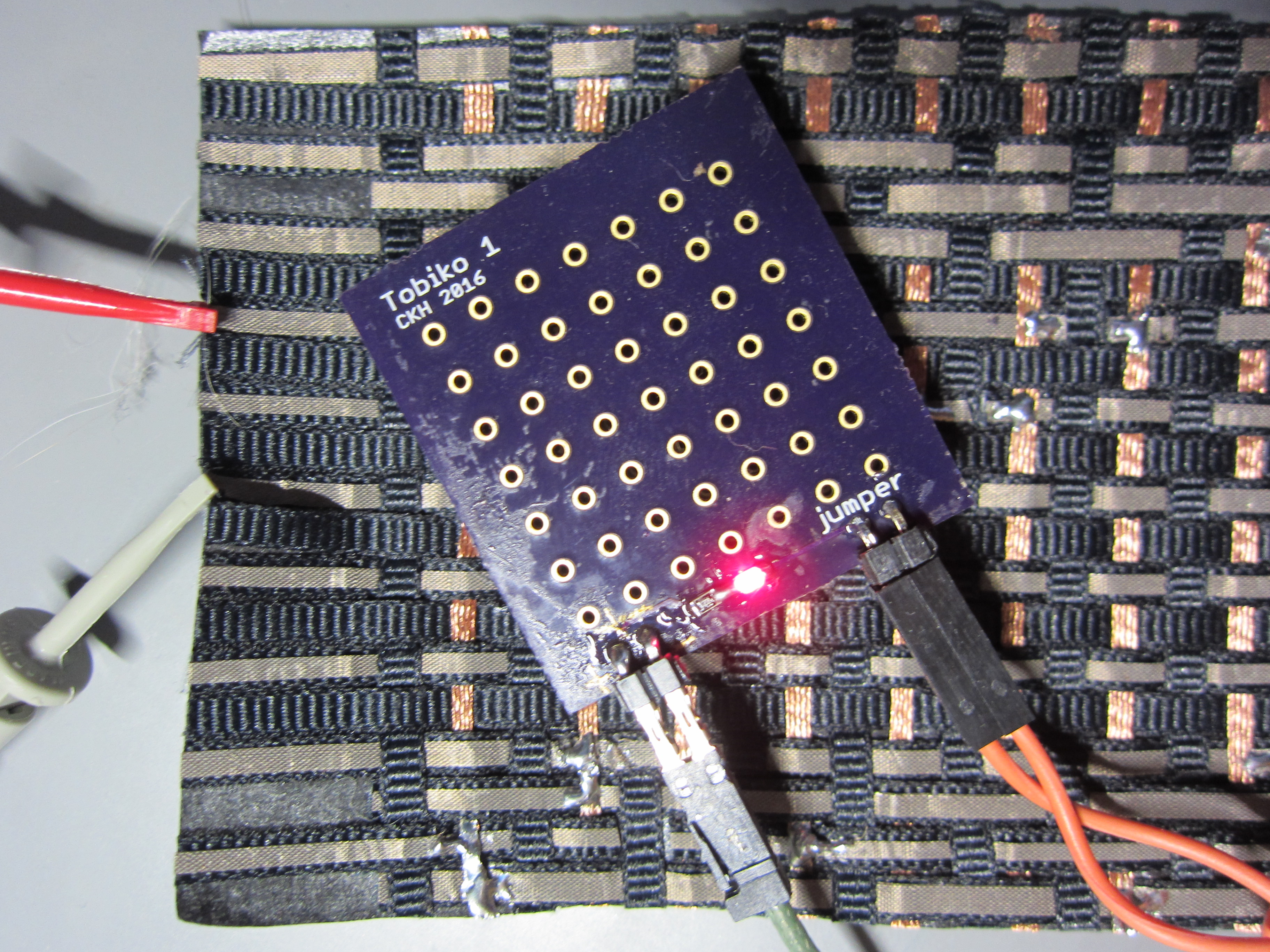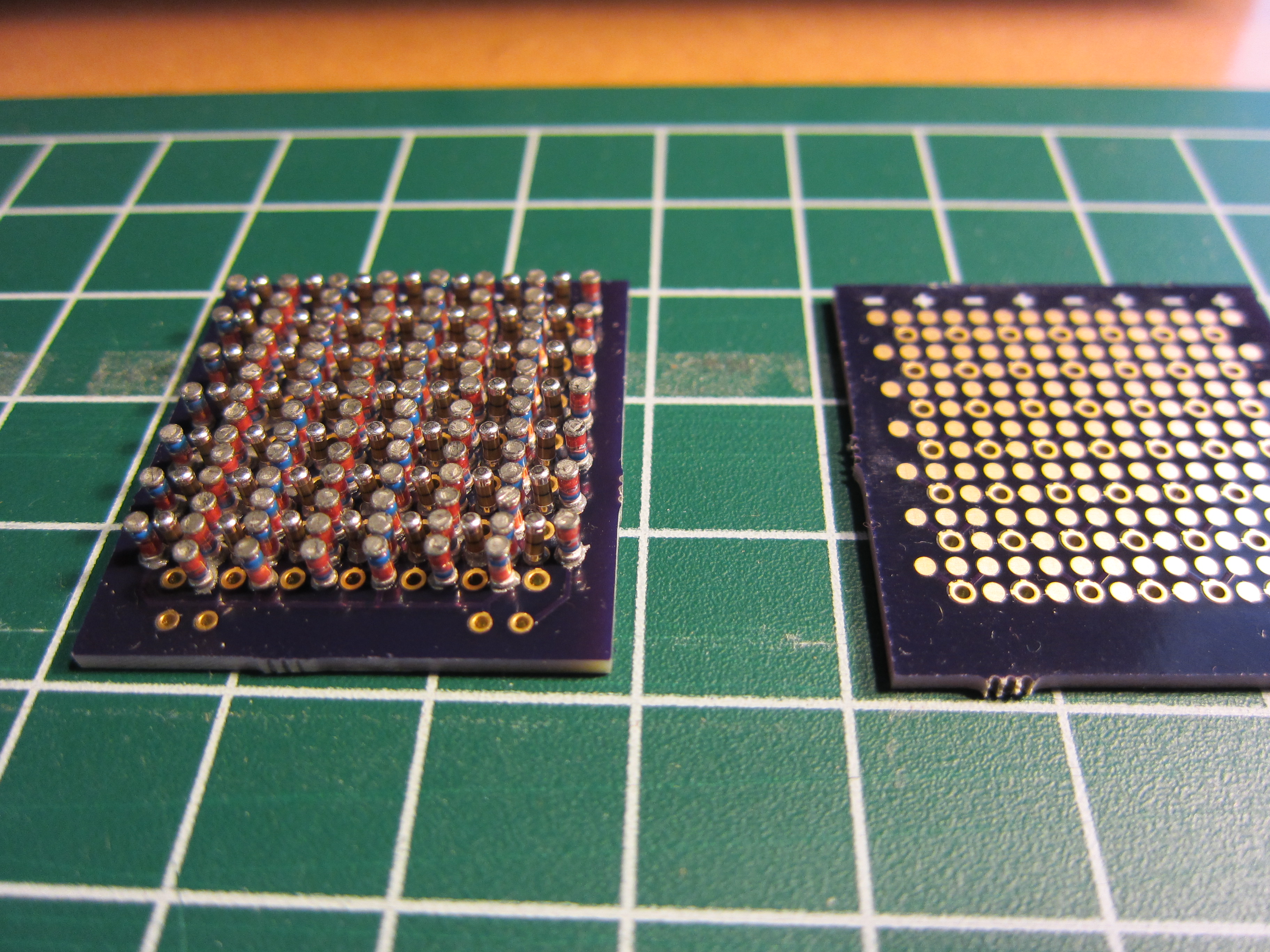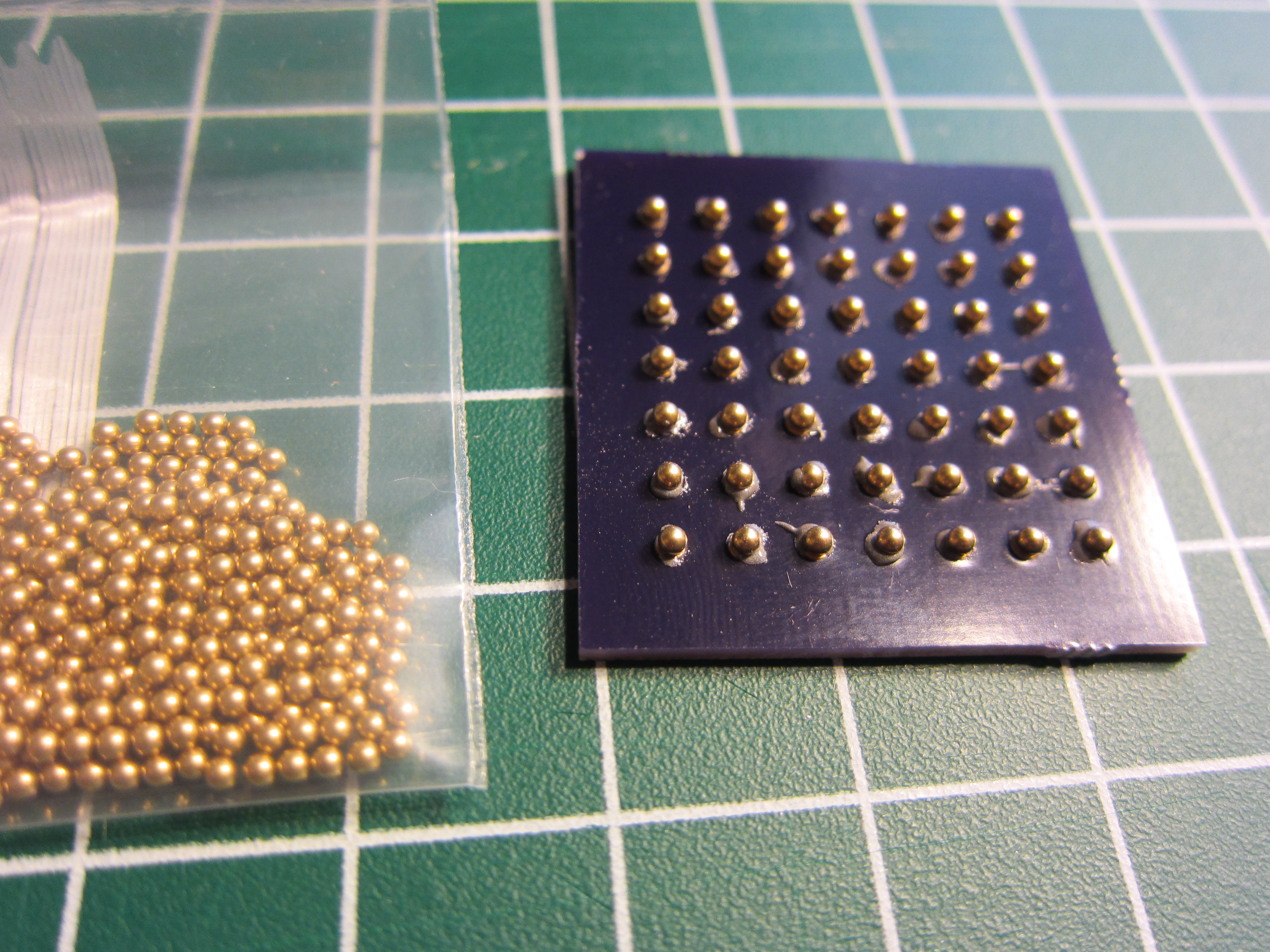
Often in electronics you hear about parasitic capacitance, an unintended side effect.
But the purple-and-gold circuit above is a deliberately parasitic circuit board that can tap into another circuit and extract power for itself. The most important thing is that the parasite not kill the host by shorting out its wires. The parasite board has a lot of small contacts (1mm brass beads), and each has components to prevent current flowing in the wrong direction. As a result, you can power the circuit if there is a sufficient voltage difference on any two contacts, and you need not know which ones ahead of time. In the picture below, the parasite is tapping into a powered electronic textile circuit.

The board picks up enough power from the underlying live circuit to run its LED. (The green cable is measuring the voltage, and the orange one just plugs the LED into the circuit). No special effort was made to align things. This basic version is kind of like a stethoscope for the textile circuit. With power acquired, and with an onboard microcontroller, the parasite could start scanning all its contacts for interesting signals, maybe eavesdrop on the textile circuit or configure itself to talk with another parasite. If the parasite could patch a hole in the underlying circuit by carrying signals across, it could even give some payback instead of just being a vampire.
However, for this 7×7 design, there are 200 parts (including those contacts). Diodes and resistors are hidden between two small boards. More construction photos below!
Sandwich ready for closing. 
These brass things solder easily, resemble tasty flying fish eggs, and are far cheaper than gold SMT contacts. They may oxidize after a while though

Not designed for high throughput production, for that it would be better to integrate more of these parts into a chip or package.  Thanks to Tim Gillespie for setup of the FirstBuild reflow oven.
Thanks to Tim Gillespie for setup of the FirstBuild reflow oven.